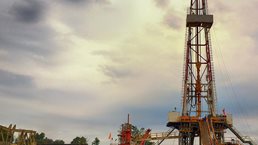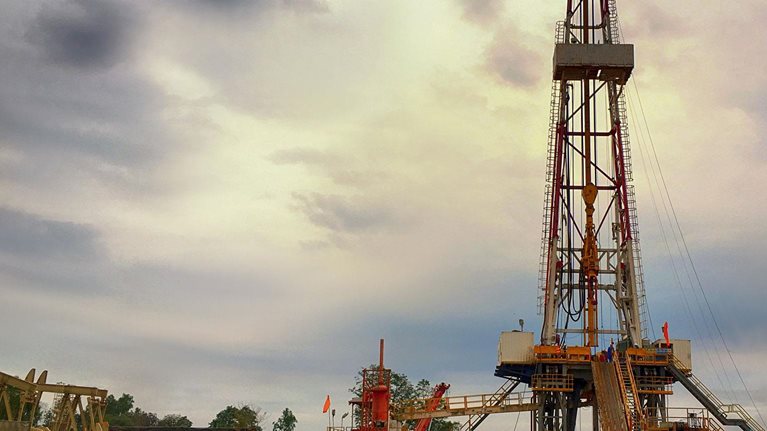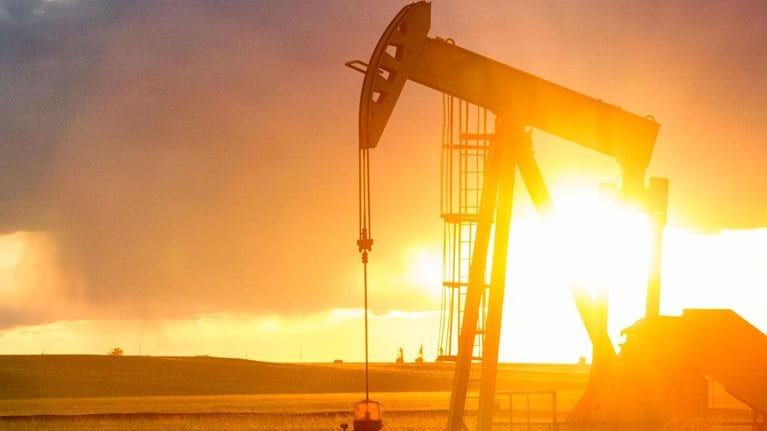Key events shaping the fourth quarter of 2018
A broad set of events, ranging from expected geopolitical uncertainty in Venezuela and Iran to easing of the bottleneck in the Permian, shaped the market in the fourth quarter.
- OPEC/non-OPEC December meeting: Following the oil price collapse, OPEC and Russia agreed in December to cut production by 1.2 million barrels per day (b/d). By January of 2019, the group was able to achieve 75 percent of that target. Saudi Arabia, the United Arab Emirates, and Kuwait chipped in with most of the reductions, with Saudi reducing output to 10.21 million b/d, well below its initial commitment of 10.31 million b/d. By March, Russia, however, had lowered its output by just 97,000 b/d compared to October production levels, relative to the 228,000 b/d it promised as part of the deal. Further cuts are expected going into March as the group tries to manage the price levels. The next meeting in April could likely yield no change to the status quo if the Brent prices continue to trade along the sub-$75 level.
- Venezuela sanctions: US sanctions introduced in late January are expected to knock a further 500,000-600,000 b/d off Venezuela’s crude exports this year. December output stood at 1.34 million b/d, down from 2.4 million b/d three years earlier. Supply to US Gulf Coast refineries fell to 574,000 b/d in December, down roughly 40 percent from July 2016. Apart from the direct impact on crude exports, US sanctions are preventing the arrival of diluent (naphtha and light oils) required to produce heavy Orinoco Belt crude. By mid-February, over 300,000 b/d of this output was likely to be shut-in. The outlook for Venezuela remains highly uncertain and unlikely to change in the very near-term.
- Iranian sanctions: After six-month exemptions were unexpectedly granted to Iranian oil importers in early fourth quarter, attention has now switched to whether or not these exemptions will be extended in May. Opinions are split, but abrupt expiration of exemptions could lead to a short-term squeeze in the Indian and Japanese refinery markets.
- US oil production continues to rise: November saw record output of 11.9 million b/d, up 345,000 b/d from October and up nearly 1.8 million b/d compared with November 2017’s average. January’s estimated growth, however, is the lowest for several months, but the Energy Information Agency (EIA) expects output growth to rise again this year and on through the 2020s, with strong growth in the Permian and Gulf of Mexico pushing total production up to 13 million b/d in 2020 (the third consecutive record year for output).
- Permian export capacity growth: Differentials between inland benchmarks and West Texas Intermediate (WTI)/Gulf Coast have sharply narrowed over the last few months as fresh export capacity has come onstream. Among the pipeline developments, Plains All American expanded its 300,000 b/d Sunrise Pipeline in November, whereas Enterprise Products began shipping crude on the 200,000 b/d Seminole converted natural gas liquids pipeline. Plains All American’s 585,000 b/d Cactus II crude pipeline from the Permian to Corpus Christi is on schedule for partial service in late Q3 2019 and full service by April 2020. Additionally, construction of Phillips 66’s Gray Oak pipeline and EPIC’s NGL pipe (to be converted to crude service) is ongoing as well.
Would you like to learn more about our Oil & Gas Practice?
Oil-and-gas-market trends
The significant drop in oil prices late in the third quarter was triggered by the continued rise in US shale production, larger-than-expected exemptions for Iranian exports, and increased flow from OPEC, particularly Saudi Arabia, coupled with concerns about global demand growth linked to weakening economic performance and trade disputes. Rising interest rates in the US and general weariness related to shale profitability also led to tightening of capital availability for unconventional operations. However, OPEC’s December deal and falls in Venezuelan output started the reverse journey to bring the market back in balance.
Global oil demand reached 99.89 million b/d in Q4 2018, which puts average 2018 output at 98.76 million b/d—up 1.47 million b/d (from 97.29 million b/d) in 2017. The growth was spread across most regions, including the US, India, China, and Africa, although there were slight falls in OECD Asia–Pacific and the Middle East. Looking ahead, OPEC expects demand to reach 100 million b/d in 2019, up 1.24 millon b/d—so a slightly slower rate than 2018. The International Energy Agency (IEA) is a little more bullish, putting oil demand growth for 2019 at 1.4 million b/d in its February report.
Non-OPEC oil supply growth in 2018 was 2.72 million b/d (or 4.7 percent) pushing the total production up to 62.17 million b/d. OPEC supply ended the year at 31.6 million b/d, and it was put at just 30.8 million b/d at the end of January following the OPEC supply agreement in December. Non- OPEC oil supply in 2019 is expected to reach 64.34 million b/d, according to OPEC estimates, driven largely by rises in the US Gulf of Mexico. McKinsey Energy Insights’ estimates place non-OPEC supply slightly higher at 64.62 million b/d.
In regard to inventory, total OECD commercial oil stocks stood at 2,851 million barrels at the end of December, just 2.5 million barrels lower than the same time one year ago, and 28 million barrels above the latest five-year average, according to OPEC (with crude 50 million barrels higher and products 22 million barrels lower). This is down compared to the stock levels held in 2015/6 and into 2017, which had acted as a dampener to prices for several years. Lower stock levels now mean the market is less cushioned from (and therefore more sensitive to) changes in the supply/demand balance.
Prices forecast are lower across multiple agencies. The EIA expects high US production will keep 2019 prices low, and in January, the agency forecasted an average of $54.79/barrel for WTI in 2019, down from $65.06/barrel in 2018. However, only last quarter it was forecasting $67/barrel for WTI in 2019. Other forecasters also cut 2019 estimates, with the International Monetary Fund reducing Brent to just below $60/barrel in its January World Economic Outlook from close to $70/barrel in October (Exhibit 1).

Spending and capital expenditures
Capital expenditures (capex) and rig count both rose through the fourth quarter, boosted by the rise in prices earlier in 2018 and a growing need to replace reserves.
The fourth quarter of 2018 saw higher capex, reaching $61.5 billion, despite the fall in crude prices—up from around $57 billion in the third quarter and the highest since Q4 2015 (Exhibit 2). A large chunk of the growth is coming from national oil companies (NOCs) and independents in the offshore sector. This is an area that has not seen much activity since the crude price downturn at the end of 2014, but which needs investment to maintain production after several years of under-investment.

This suggests exploration & production (E&P) sentiment is starting to normalize more broadly. Majors are investing as well, although on a more project-by-project basis.
In the North American onshore, there was less of an uptick last quarter, and the recent oil price volatility has clouded the outlook for 2019, with operators generally taking a more conservative approach at the start of this year. This slowdown led to warnings from a number of senior oilfield services and equipment (OFSE) executives of a slower-than-expected activity outlook.
Many shale producers have announced that they will spend within cash flow and focus on drilled but uncompleted (DUC) wells instead of drilling new ones. Concentrating on DUC wells would still drive US production growth, but perhaps not as much as the EIA expects, although there is little sign of this in the latest (February) output estimates which put Permian production close to 4 million b/d.
OFSE market performance
There was a clear split in fortunes for those involved in the OFSE sector in the fourth quarter, with companies most exposed to the North American onshore faring worst, and those with a strong presence elsewhere—particularly in gas/liquid natural gas (LNG) or midstream, but also offshore international—doing better. Looking at the key OFSE metrics for the quarter:
- Rig counts were up. The North American Baker Hughes rig count initially rose in the fourth quarter, peaking at 1,283 in the third week of November (Exhibit 3). It then fell back to 1,151 over the festive season, before recovering through January to around 1,290 over recent weeks—so up slightly overall since the end of Q3. In the Permian, which dominates output growth, the numbers are more bearish, with the rig count down from 493 in November to 478 at the end of January.

- Offshore rig numbers showed some significant improvement through Q4, with numbers up 15 percent overall on the quarter. The biggest rise was in the Middle East, where the number of active offshore rigs rose to 63 in January from 48 in September. There were also rises in China, Asia–Pacific, and Western Europe.
- Overall revenue for the OFSE sector rose by an average of 1.5 percent compared with the previous quarter, though there was a wide range of performances, with Services showing a sharp decline (Exhibit 4). Revenue in Q4 was up 17.9 percent compared to Q4 2017.

- Average margins for earnings before interest, taxes, depreciation, and amortization fared rather worse, dropping in all segments compared to the previous quarter after some areas had shown a degree of recovery in previous quarters (Exhibit 5). Non-integrated Services and engineering, procurement, and construction (EPC) sectors performed worst, although Services still remained well above its level from this time last year (and other categories are little changed).

- Total returns to shareholders (TRS) continued to be weak for the entire sector, underperforming what was a bearish equity market generally through the fourth quarter, due to the significant falls in crude prices and continuing concern over the long-term viability of fossil fuel extraction among some investors (Exhibit 6). There was a slight uptick through January, with support from rising crude, but all categories also continued to underperform relative to crude and E&P, suggesting OFSE is taking the biggest hit from ongoing cost restraint. Assets remained the worst performer and Equipment the best, with signs that Equipment may be drawing further ahead of the other categories.

Sector performance
- Equipment. Revenues were up 7 percent on the quarter, compared to a 2.3 percent rise last quarter, and were up 15 percent on Q4 2017. However, margins slipped slightly on the quarter, although they remained 2.8 percentage points above Q4 2017.
- Assets. Revenue was up 1.2 percent on the quarter, similar to the rise of 1 percent in the previous quarter, leaving the total 5.5 percent higher than in Q4 2017. Margins saw little change compared to the previous quarter, although were slightly down on Q4 2017.
- Services. Revenue fell 10 percent on the quarter, compared to a 1.4 percent increase in Q3, and was 4 percent down on the year. Margins also fell but remain about 24 percentage points up on the year. Service companies reported, as expected, that North American demand for completion services decreased during the fourth quarter, leading to lower pricing for hydraulic fracturing services.

OFSE quarterly: Volatile end to a positive quarter
- Integrated companies. Revenue was flat on the quarter, after growing by 1.7 percent in the previous quarter, but was up 46 percent on the year. Margins were slightly weaker. Those exposed to the US onshore suffered most—with big falls in US onshore revenue, typically offset by small gains in offshore. Baker Hughes, a GE company, performed better than its competitors because of lower exposure to the North American onshore shale market (revenue up 11 percent on Q3). It is also heavily exposed to the fast-growing LNG and midstream sectors through its TPS (Turbomachinery and Process Solutions) unit, with strong growth likely to continue into 2019.
- EPC. Revenues for EPC firms were up 2 percent, compared to a 5 percent rise in Q3, and are now over 6 percent above Q4 2017 levels. The backlog for select players increased by 1 percent, to reach $80.9 billion. While EPC revenues and backlog were up this quarter, margin performance fell sharply. Margins for this group decreased by 14.3 percentage points to reach –5.6 percent. The low margins were largely driven by write-offs from leading players, reflecting the significant underperformance in project delivery.


